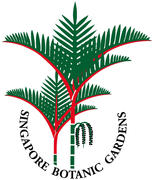Nomenclature
Ipomoea horsfalliaeHook., Bot. Mag. (1834) plate 3315.
Description
Ooststroom, S.J. van & R.D.Hoogland. 1953. Convolvulaceae in FloraMalesiana 4: 484.
Biogeography, Ecology and Natural History
Presumed to be a native of the West Indian Islands, cultivated throughoutthe tropics in gardens for ornamental purposes.
Other information
Ipomoea horsfalliae was described from plants cultivated in England and the precise wild origin is unknown, though it has been widely supposed to be somewhere in the West Indies, perhaps Jamaica. This species is cultivated world-wide in the tropics as a flowering climber. There is speculation that cultivated plants may be hybrids differing genetically from the wild populations. Certainly cultivated plants rarely produce capsules or seeds.
Horticulture
Austin, D.F. 2005. Convolvulaceae in Staples, G. & D. Herbst. 2005. A tropical garden flora. Bishop Museum Press.
Authorship for webpage


Add new comment